This Japanese-inspired braised pork in a meaty, savoury sauce is deceptively easy to make. A fantastic topping for rice as well as ramen.

Time: 4/5
If you want this tonight you better start yesterday
Effort: 3/5
Put in the work, reap the results
Pork by another name
You may be familiar with chashu as a ramen topping, where the term refers to pork that is braised in a savoury sauce until fall-apart tender. Chashu is actually a loan-word from the Chinese term char siu (叉燒), which refers to something entirely different – Cantonese barbecued pork basted with a sweet, sticky glaze.
This is not a dig against chashu, regardless of the great affection I have for Cantonese barbecue. The Japanese took pork down a different fork in the road, and created a fantastic topping for a steaming bowl of noodles. Although, I’ve always wondered how well it would do if served with rice, and one fine day I accidentally went down a rabbit hole reading up recipes online in an attempt to reverse engineer it. As one does.
To my delight, it turns out that chashu is one of those things that seem fancy but are deceptively easy to make. It might be a bit of a hassle setting things up (especially trussing the pork) and it takes quite a bit of time to cook, but once you get things going there isn’t much to do except wait. I made my chashu by braising it in the oven, but it would also work if you simmered it gently on the stove until the pork is tender.
It’s also a recipe that lends itself to scale. You can make as much chashu as you can fit in your braising vessel, so it is entirely feasible to make a lot of chashu and have it sitting in your fridge, ready at hand to upgrade any meal.
A word about that leftover braising liquid – save it, for the love of all that is good! As it donates savouriness to the pork, it takes on porkiness in return. The sauce is as much an end product of the recipe as the actual chashu. Use it to marinade soft-boiled eggs (this is what I did, and it was delicious), spread it on bread in a sandwich, as a stir fry sauce, or simply drizzle over rice to make the meal extra indulgent.
To save you the suspense, the chashu was magnificent over rice. Dedicated readers will recognise the tried and true rice bowl template at work here: the chashu is the protein, the braising liquid is the sauce, add a Napa cabbage stir fry and top it with rice. For similar rice bowl ideas, check out my chicken teriyaki, mackerel teriyaki, miso glazed salmon, gyudon beef bowl and pork bulgogi.
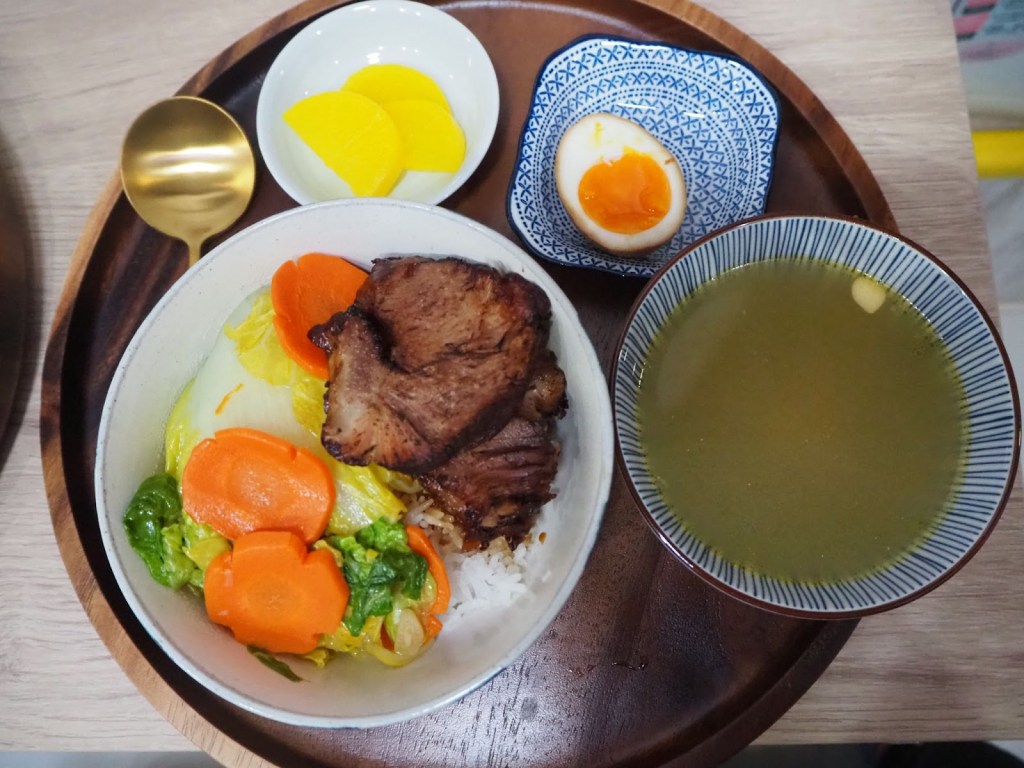
Dramatis Personae
Pork – 100-200g pax
Skin-off pork belly is the more common choice, but I went with shoulder instead to save on calories. Whatever cut you choose to use, pick something with plenty of connective tissue which will become tender with slow, gentle cooking. Save the lean cuts for something else, pork loin won’t work well here.
Trussing it up takes a bit of effort, but it bunches the pork up into a nice, plump shape which gives us something with a prettier cross section when we cut it. You could leave it alone if appearances don’t matter as much to you, although I advise you that pretty food does taste better.
Braising liquid – enough to come up at least half way up the pork
Soy sauce, mirin and sugar will get you very close, but some bonito and kombu dashi (whether store-bought or home made) will bring you well into Japanese restaurant territory in terms of flavour. I aim for a ratio of about half water and half everything else.
Aromatics
Ginger and garlic are essential. Shallots are nice if you have them, as are spring onions.
Vegetables – 100-200g pax
Always eat your veggies! Besides, chashu tends to make a meal feel quite heavy and some vegetables can lighten it up. A Napa cabbage and carrot stir fry keeps the Japanese theme going.
Executive summary
- The day before serving:
- Truss and sear the pork in the braising vessel and reserve. Preheat oven to 135C/275F
- Stir fry aromatics in the remaining fat. Add braising liquid and return pork. Bring to a simmer.
- Cover the pork and transfer into the oven, turning the pork every half an hour or so.
- Braise for about 2.5 hours or until tender. Allow to cool and refrigerate overnight. Optionally, add peeled soft-boiled eggs to the pot as well to soak overnight in the braising liquid.
- The day you want to eat:
- Cook rice and vegetables.
- Take the chilled chashu out of the fridge and slice into pieces. Brown the pieces in a pan, under the broiler or with a kitchen torch.
- Assemble and serve.
Play by Play

Here’s a piece of pork shoulder that weighs about 900g. I couldn’t get butcher’s twine, so this much thicker cotton twine will have to do.
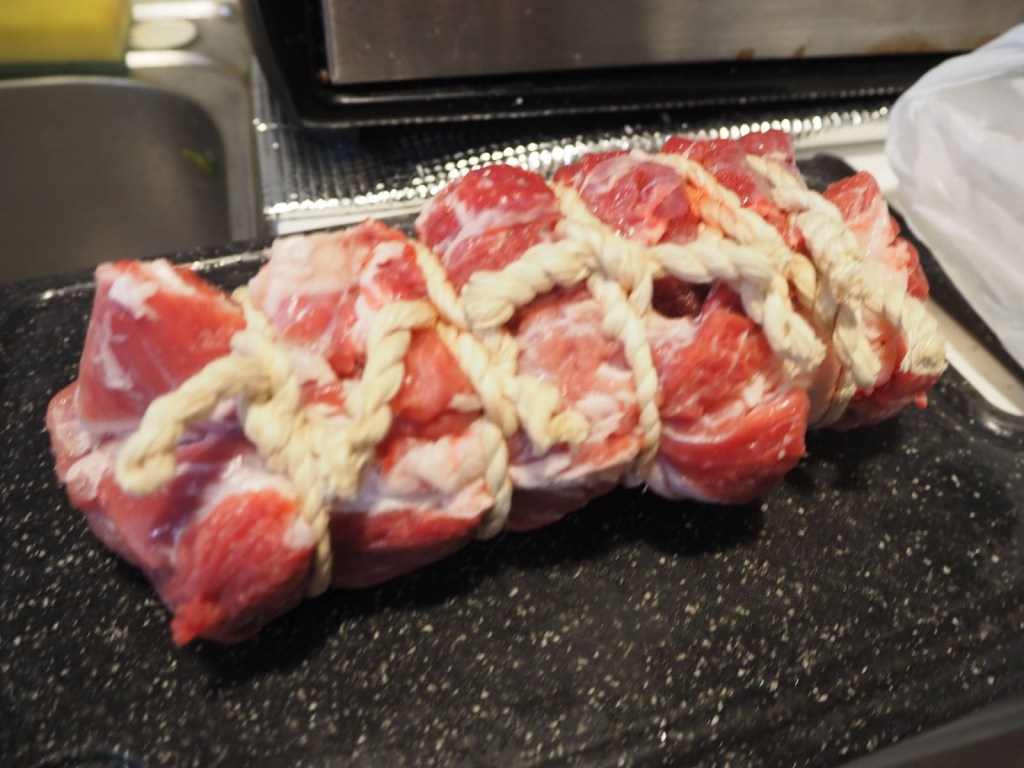

Nothing fancy, tie it up whichever way you have to, to shape it into a log.
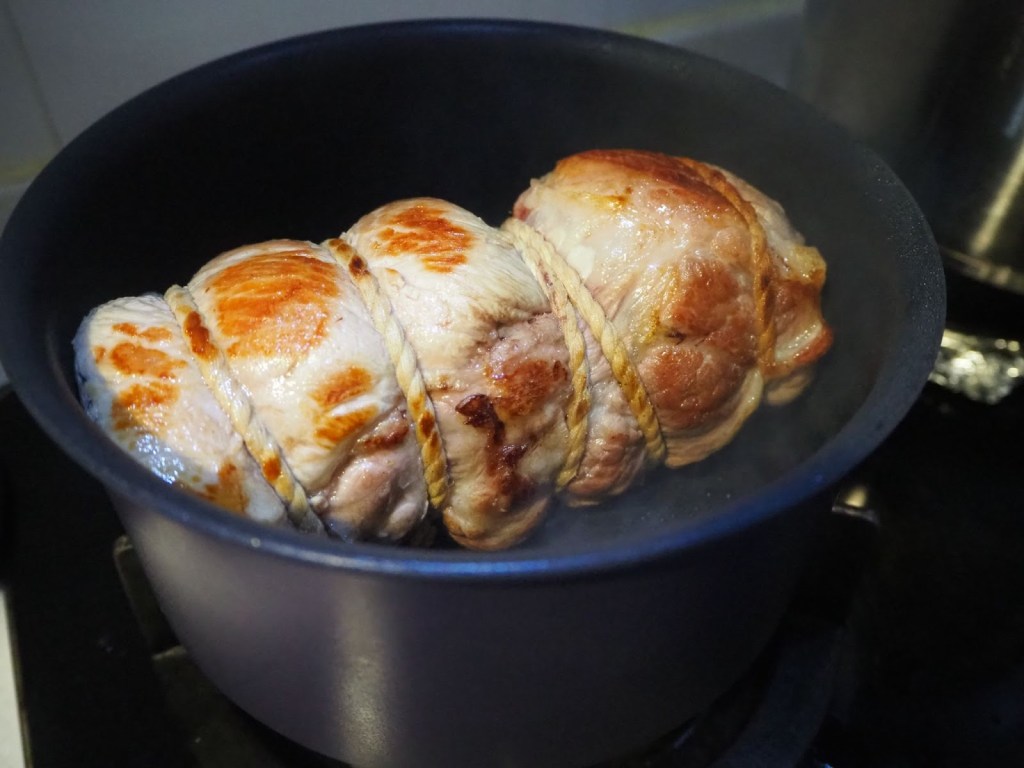
Remember kids, sear is flavour! Watch the twine though, they may burn. Here you get a good look at how the thick cotton twine got in the way of the pork making contact with the pan.

Aromatics and liquid in. Bring to a simmer.
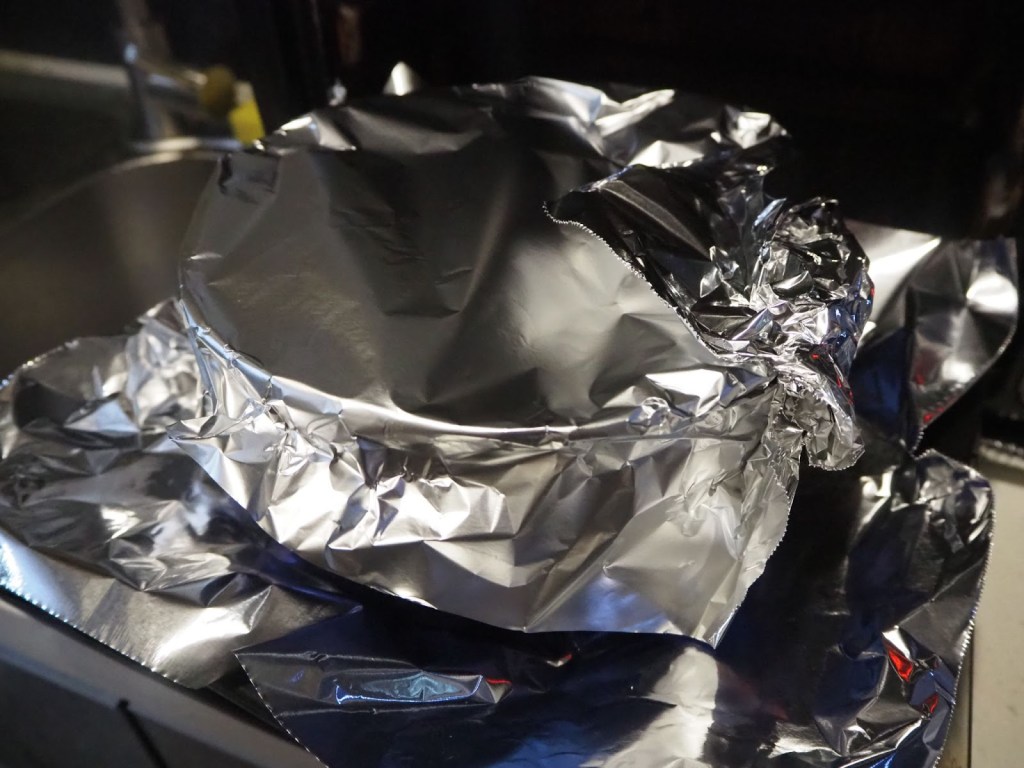
Cover with foil and braise in the oven. I don’t have an oven safe lid, so this aluminium foil will have to do.
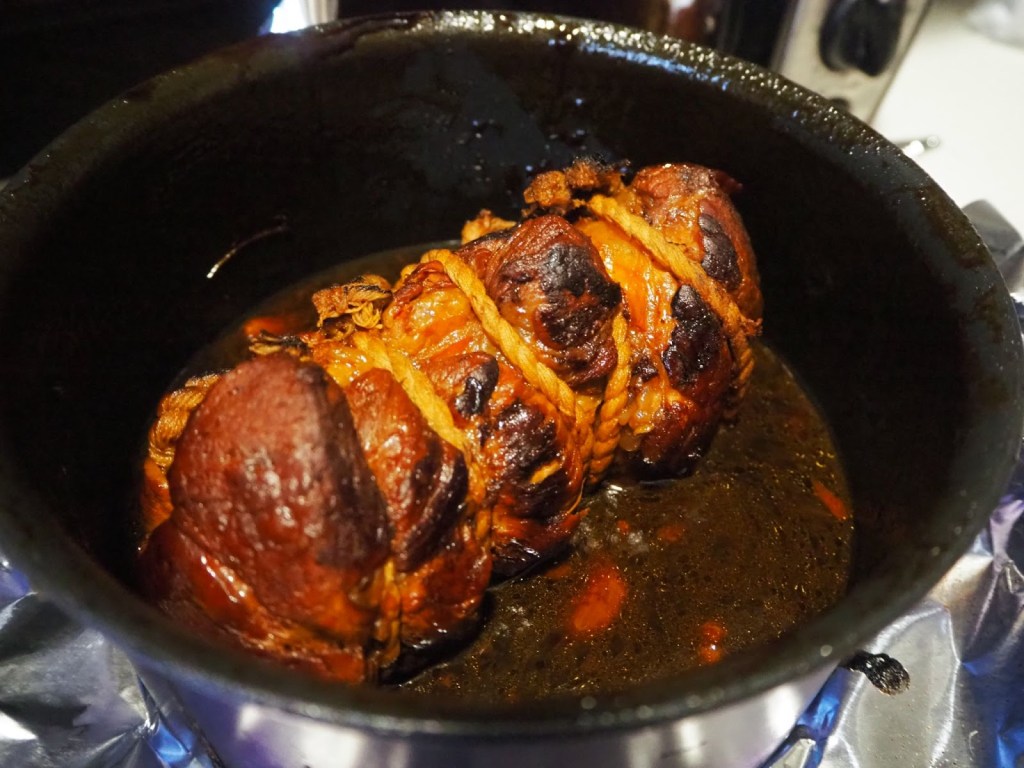
Watch the water levels, the liquid will reduce as it cooks. I pulled mine out every half an hour or so to check on it, turning the pork log to make sure each part of it gets some time being submerged by the braising liquid. Once it’s tender, allow to cool and stick in the fridge. This is the point where you can nestle soft-boiled eggs into the sauce to make marinaded eggs for tomorrow.
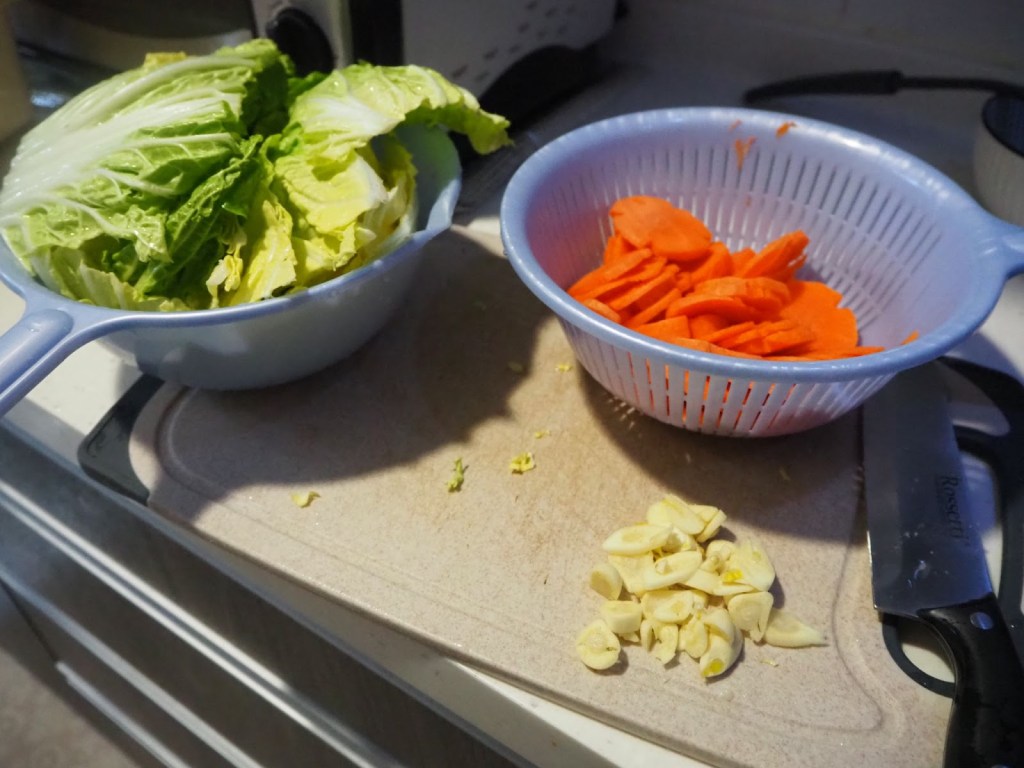
Here we are the next day. Napa cabbage, carrots and garlic. Cut up and ready to go.
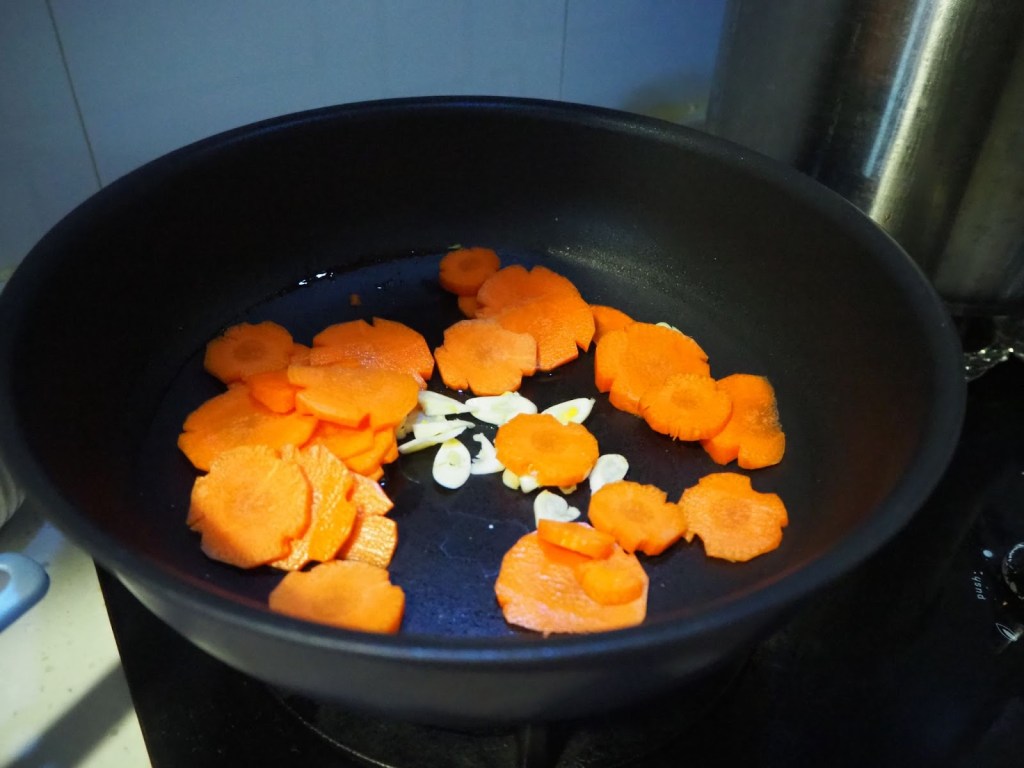

Giving the carrots a head start, as I tend to like them softer than most prefer. Napa cabbage goes in later, then I season with salt. Optionally, add a drizzle of sesame oil after the heat is off to preserve its delicate aroma.
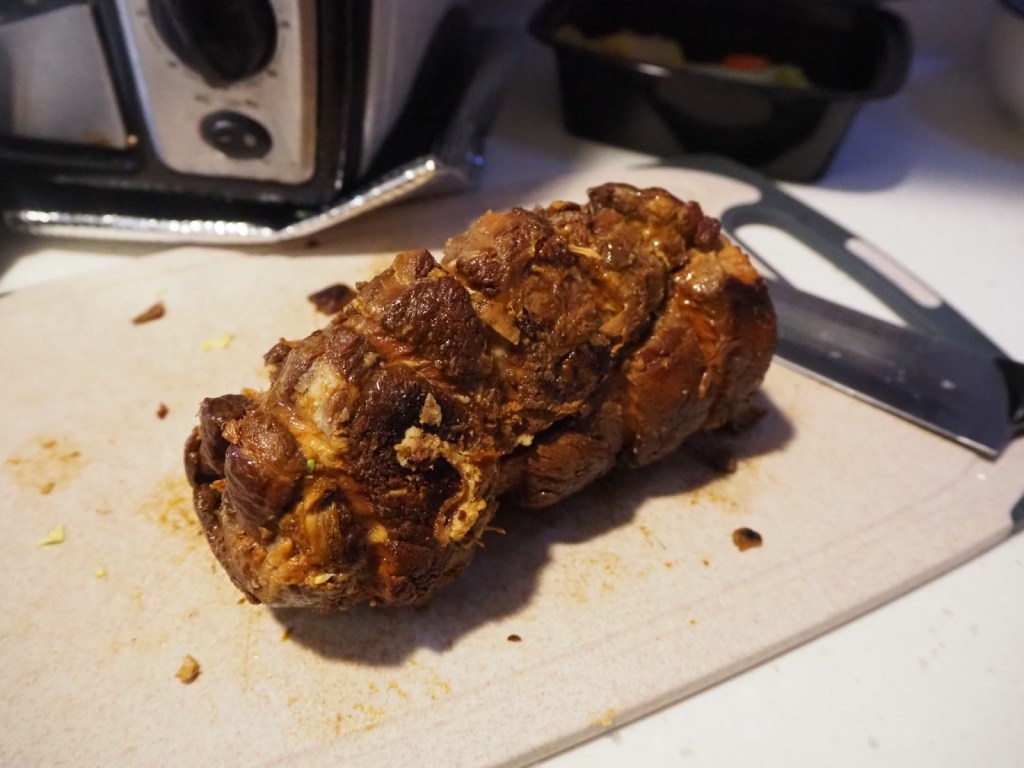
The chashu has spent a night chilling out in the fridge. Now that it’s cold and firm, It’s much easier to cut.

You could broil the pieces or sear them in a pan, but the kitchen is one of the rare places where one can indulge in socially sanctioned pyromania. So kitchen torch it is.
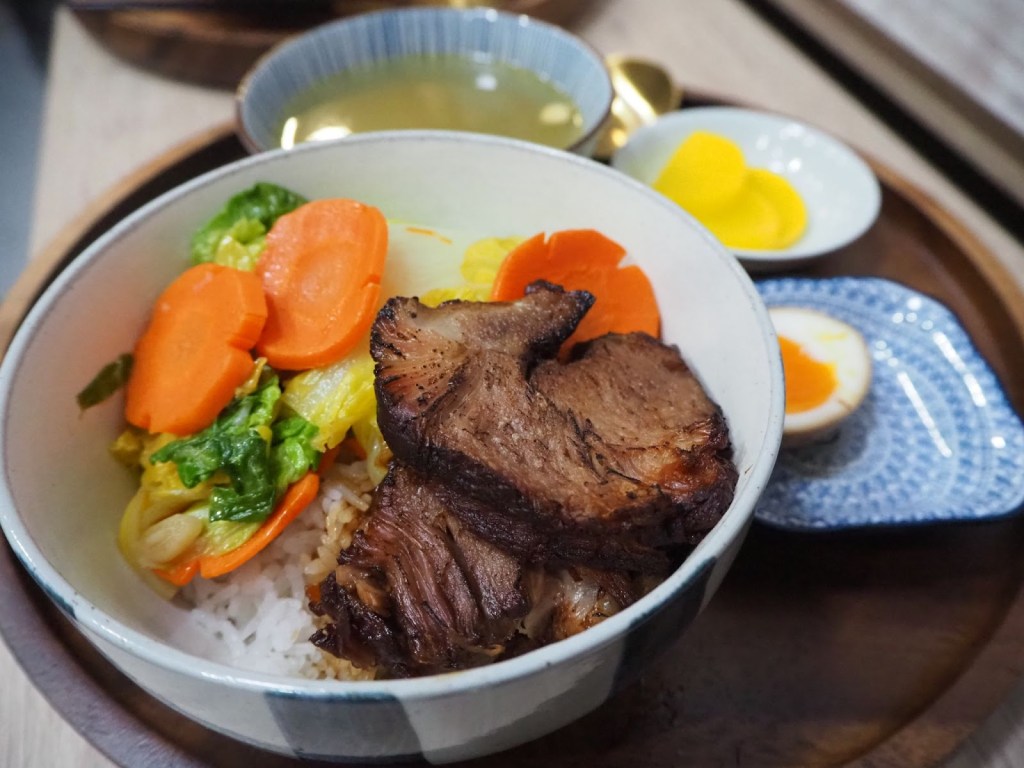
Served on rice with soup, pickled radishes and a marinated soft-boiled egg. Variety is the spice of life, and of dinner too. Itadakimasu~
Keep browsing by categories, or by tags:
Beef Blanching Broccoli Cabbage Carrots Cast iron Chicken Cucumber Curry Daikon Dashi Date Night Dried shrimp Eggplant Eggs Fish and seafood Garlic Ginger Glass noodles Gochujang Honey Miso Napa cabbage Onion Oven Pasta Pork Potatoes Rock sugar Salmon Sesame oil Shiitake mushrooms Shrimp Sous Vide Spicy Steaming Stewing Stir fry String beans Sweet potatoes Teriyaki Thai basil Tomatoes Yogurt Zucchini
